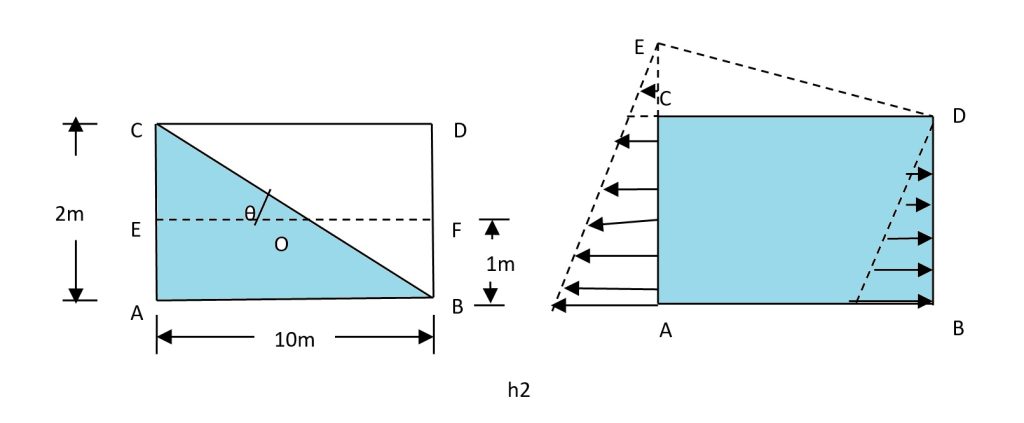Problem Statement
If the velocity distribution of a fluid over a plate is given by \(u = \frac{3}{4}y - y^2\), where \(u\) is the velocity in m/s at a distance of \(y\) metres above the plate, determine the shear stress at \(y = 0.15\) metre. Take dynamic viscosity of the fluid as \(8.5 \times 10^{-5}\) kg-sec/m².
Given Data
- Velocity Distribution, \(u = \frac{3}{4}y - y^2\)
- Distance from plate, \(y = 0.15 \, \text{m}\)
- Dynamic Viscosity, \(\mu = 8.5 \times 10^{-5} \, \text{kg-sec/m}^2\)
Solution
1. Clarify and Convert Units
The unit kg-sec/m² is an older way of expressing viscosity. In the MKS system, it is equivalent to the SI unit N·s/m², which is also equal to kg/(m·s) or Pa·s. We will proceed assuming it is equivalent to the standard SI unit.
2. Find the Velocity Gradient (\(du/dy\))
The velocity gradient is the first derivative of the velocity profile with respect to the distance \(y\).
3. Evaluate the Velocity Gradient at y = 0.15 m
Substitute the given value of \(y\) into the velocity gradient expression.
4. Calculate the Shear Stress (\(\tau\))
Apply Newton's law of viscosity using the calculated velocity gradient.
The shear stress at y = 0.15 m is \( \tau = 3.825 \times 10^{-5} \, \text{N/m}^2 \).
Explanation of the Method
1. Velocity Profile, \(u(y)\):
This equation describes how the fluid's speed changes at different distances from the fixed plate. This specific parabolic profile implies the velocity increases from zero at the plate, reaches a maximum, and then decreases.
2. Velocity Gradient, \(du/dy\):
The derivative of the velocity profile gives the velocity gradient. This value represents the rate at which adjacent layers of fluid are sliding past one another. It is the measure of the fluid's rate of shear deformation.
3. Newton's Law of Viscosity:
This fundamental principle (\(\tau = \mu \frac{du}{dy}\)) states that for Newtonian fluids, the internal stress (\(\tau\)) is directly proportional to the rate of deformation (\(du/dy\)). The dynamic viscosity (\(\mu\)) is the constant of proportionality that connects them.
Physical Meaning
The calculated shear stress (\(\tau = 3.825 \times 10^{-5} \, \text{N/m}^2\)) represents the internal frictional force per unit area within the fluid at a specific height of 0.15 metres from the plate. This stress exists because different layers of the fluid are moving at different speeds.
At \(y = 0.15\) m, the fluid is still moving faster than the layers closer to the plate. The viscosity of the fluid causes these layers to resist this relative motion, creating the shear stress. This internal force is responsible for the transfer of momentum through the fluid and is a critical factor in determining the overall drag on the plate.




